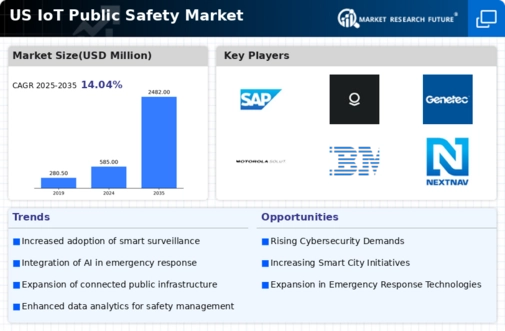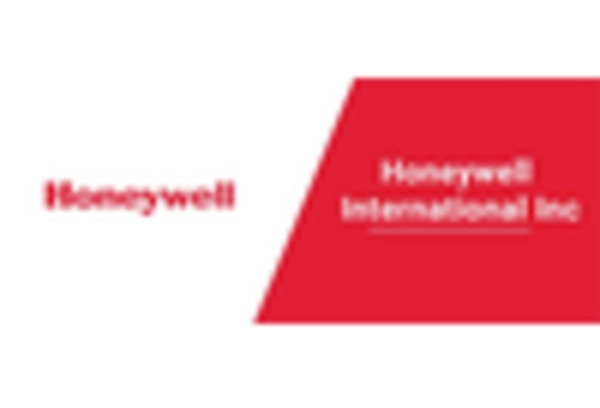Rising Cybersecurity Concerns
As the iot public-safety market expands, so do the cybersecurity threats associated with it. The increasing interconnectivity of devices raises vulnerabilities that could be exploited by malicious actors. In 2025, it is projected that cyberattacks on public safety systems could cost the industry upwards of $3 billion annually. This alarming trend has prompted public safety agencies to prioritize cybersecurity measures, leading to increased investments in secure IoT solutions. Agencies are now seeking advanced security protocols and technologies to protect sensitive data and ensure the integrity of their operations. The focus on cybersecurity not only safeguards public safety infrastructure but also enhances trust among citizens, thereby driving further adoption of IoT technologies in the public safety sector.
Legislative Support for IoT Integration
Legislative measures aimed at supporting the integration of IoT technologies into public safety frameworks are emerging as a key driver in the iot public-safety market. Recent policies have encouraged the adoption of smart technologies to improve emergency response and public safety outcomes. For instance, federal funding programs have been established to assist local agencies in implementing IoT solutions. By 2025, it is anticipated that federal and state governments will allocate over $2 billion to support these initiatives. This legislative backing not only facilitates the deployment of advanced technologies but also fosters collaboration between public and private sectors. As a result, the iot public-safety market is likely to experience accelerated growth due to the favorable regulatory environment.
Advancements in Communication Technologies
The evolution of communication technologies is a crucial driver for the iot public-safety market. Enhanced communication systems, such as 5G networks, are enabling faster and more reliable data transmission, which is essential for real-time public safety applications. The deployment of 5G is expected to reach 50% coverage in urban areas by 2026, significantly improving the capabilities of IoT devices used in public safety. This advancement allows for seamless connectivity among various systems, facilitating better coordination among emergency responders. Moreover, improved communication technologies can enhance the effectiveness of surveillance systems and emergency alerts, ultimately leading to quicker response times. As these technologies continue to advance, they are likely to play a pivotal role in shaping the future of the iot public-safety market.
Growing Demand for Real-Time Data Analytics
The increasing need for real-time data analytics is a pivotal driver in the iot public-safety market. Law enforcement agencies and emergency responders are increasingly relying on data-driven insights to enhance operational efficiency and decision-making. The market for data analytics in public safety is projected to reach approximately $5 billion by 2026, reflecting a compound annual growth rate (CAGR) of around 15%. This growth is fueled by the integration of IoT devices that collect vast amounts of data, enabling agencies to respond more effectively to incidents. The ability to analyze data in real-time allows for improved situational awareness, which is crucial in emergency scenarios. Consequently, the demand for advanced analytics solutions is likely to continue rising, driving innovation and investment in the iot public-safety market.
Increased Investment in Smart City Initiatives
The push towards smart city initiatives is significantly influencing the iot public-safety market. Municipalities across the United States are investing heavily in technology to enhance public safety and improve urban living conditions. By 2025, it is estimated that smart city investments will exceed $100 billion annually, with a substantial portion allocated to public safety technologies. These initiatives often include the deployment of IoT-enabled surveillance systems, smart streetlights, and connected emergency response systems. Such investments not only aim to reduce crime rates but also enhance the overall quality of life for residents. As cities continue to evolve into smart environments, the integration of IoT solutions in public safety will likely become more pronounced, further propelling the growth of the iot public-safety market.

















Leave a Comment